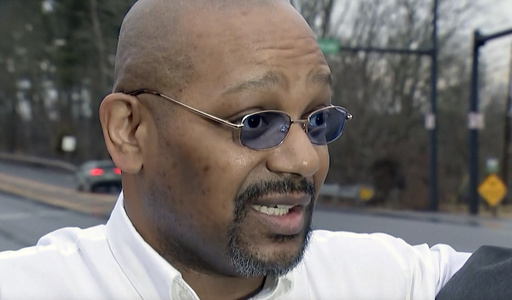PHILADELPHIA (AP) — Daniel Gwynn found himself on death row at 25 after Philadelphia prosecutors said in court that two witnesses had picked him out of a photo array in a fatal arson case.
The photo spread had by then gone missing, and his trial lawyer in 1995 may not have asked for other proof of the supposed match. But appellate lawyers who spent decades pursuing his innocence claims finally unearthed the police photo — with a federal judge’s help — in 2016 and Gwynn was noticeably absent.
“He was nowhere to be found,” said lawyer Karl Schwartz, who joined Gwynn as he left prison this week after 30 years, most of it spent on death row in western Pennsylvania. “It shocks the conscience.”
Gwynn, now 54, joins more than 40 Philadelphians exonerated of serious crimes since 2016, and more than 3,500 exonerated across the U.S. since 1989.
“More times than you would like to see, it’s powerfully exculpatory evidence that has been either hidden or misrepresented at a homicide trial that results in a guy ending up with a life sentence, or worse,” Schwartz said.
The photo array was just one of several pieces of questionable evidence used to convict Gwynn in the capital case. Investigators also relied on a confession taken as he suffered from drug withdrawal and overlooked evidence that another person — now serving a life term on other charges — had threatened to torch the building three days earlier over an unrelated slaying. Evidence points to that suspect, prosecutors now say.
Marsha Smith died in the 1994 fire in West Philadelphia, while several other people staying there were injured jumping out of windows. Few of the relevant details Gwynn gave in his police statement matched the crime scene.
The case “exemplifies an era of inexact and, at times corrupt, policing and prosecution that has broken trust with our communities to this day,” said Philadelphia District Attorney Larry Krasner, who has championed dozens of innocence claims since taking office in 2018. Meanwhile, he said, “the guilty go free and are emboldened to do more harm.”
Gwynn turned to art in prison to counter what he called “the pain and anger blinding me to the beauty of life.” Raised by a grandmother, he said he abused drugs and committed petty crimes amid “the madness of the streets” as crack-cocaine ravaged Philadelphia during his early life.
“Painting has been my therapy, a form of meditation that helps me work through my issues,” he wrote as part of an online display of his work organized by the group Art for Justice, which promotes art done by incarcerated people to foster conversations about the justice system.
A federal judge had vacated Gwynn’s conviction last year. The victim’s closest surviving relative, a brother, did not oppose his release, and a city judge closed the case on Wednesday when Krasner’s office declined to retry him.
Krasner hopes Philadelphia police, under a new mayor and commissioner, will now revisit Smith’s death.
This website uses cookies so that we can provide you with the best user experience possible. Cookie information is stored in your browser and performs functions such as recognising you when you return to our website and helping our team to understand which sections of the website you find most interesting and useful.
